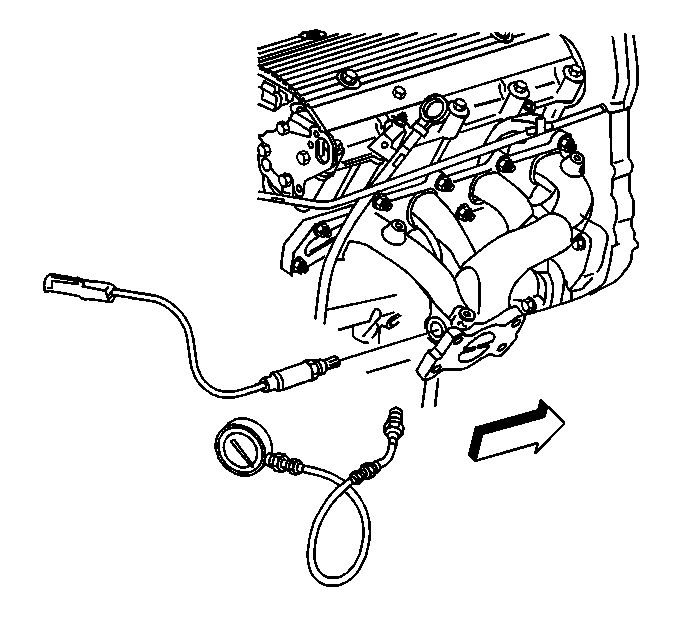System Description

Proper diagnosis for a restricted exhaust system is essential before any components are replaced. Using the Restricted Exhaust System Check table should determine if the exhaust system is restricted. The best place for checking the exhaust system is at the O2S 1 location. Once the test is completed, coat threads with anti-seize compound P/N 5613695 or equivalent prior to O2S re-installation.
Test Description
The number(s) below refer(s) to the step number(s) on the Diagnostic Table.
-
The OBD System Check prompts you to complete some of the basic checks and to store the freeze frame and failure records data on the scan tool if applicable. This creates an electronic copy of the data captured when the malfunction occurred. The scan tool stores this data for later reference.
-
The exhaust system under normal conditions has very low back pressure. If the exhaust system is restricted, a noticeable increase in exhaust pressure is noticed on the gauge.
-
If no high back pressure is found at idle, increasing the engine speed to 3,000 RPM may find a slight restriction. The added engine speed increases the exhaust flow which will help determine if there is a slight restriction.
-
This step will isolate the catalyst from the remainder of the exhaust system.
-
If the muffler is plugged, check the catalytic convertor to see if the internal material has broken apart.
Step | Action | Value(s) | Yes | No | ||||||
|---|---|---|---|---|---|---|---|---|---|---|
Did you perform the Powertrain On-Board Diagnostic (OBD) System Check? | -- | |||||||||
2 |
Caution: Avoid contact with moving parts and hot surfaces while working around a running engine in order to prevent physical injury. Is the action complete? | -- | -- | |||||||
Does the reading exceed the specified value? | 3.4 kPa (0.5 psi) | |||||||||
Does the reading exceed the specified value? | 3,000 RPM 5 kPa (0.75 psi) | |||||||||
Caution: Avoid contact with moving parts and hot surfaces while working around a running engine in order to prevent physical injury. Does the reading exceed the specified value? | 3.4 kPa (0.5 psi) | |||||||||
6 |
Does the reading exceed the specified value? | 3,000 RPM 5 kPa (0.75 psi) | ||||||||
Caution: Avoid contact with moving parts and hot surfaces while working around a running engine in order to prevent physical injury.
Did any component require replacement? | -- | |||||||||
8 |
Caution: Avoid contact with moving parts and hot surfaces while working around a running engine in order to prevent physical injury. Check the exhaust system between the engine and the catalytic convertor, if ok replace the catalytic converter. Refer to the Catalytic Converter Replacement in Engine Exhaust for the replacement procedure. Is the action complete? | -- | -- | |||||||
9 |
Caution: Avoid contact with moving parts and hot surfaces while working around a running engine in order to prevent physical injury. Does the scan tool display any DTCs that you have not diagnosed? | -- | Go to the applicable DTC table | System OK |
